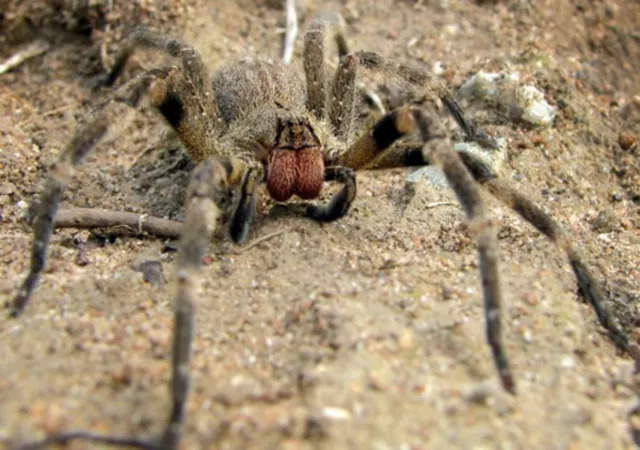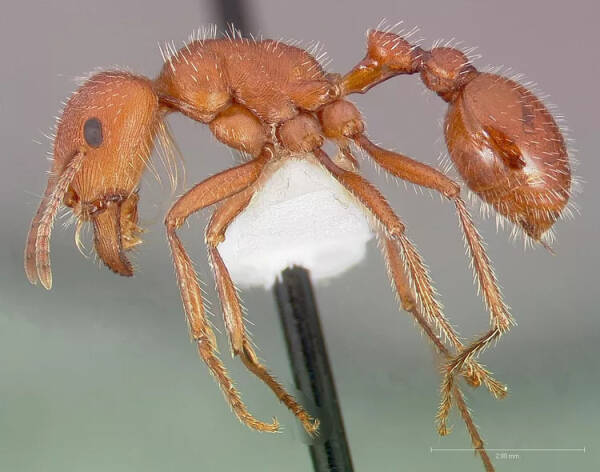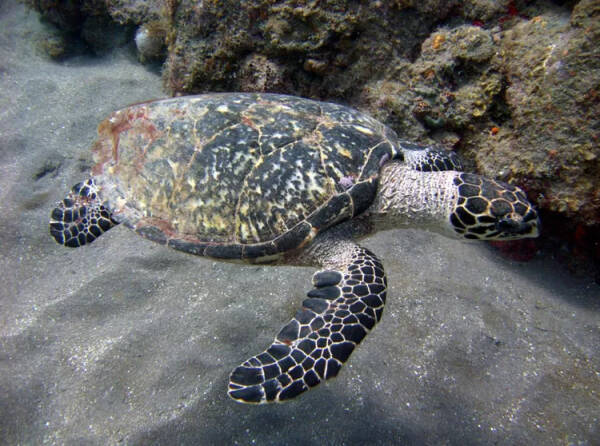If there's one thing animals are good at, it's killing other animals - and one of the most cunning, insidious and effective means of delivering a fatal blow is through toxic compounds. These 11 venomous animals can easily kill an adult human.
Technical Note: A “venomous” animal is one that passively spreads toxins by being eaten or attacked by other animals; a “venomous” animal actively injects toxins into its victims via stingers, fangs, or other appendages. Bon Appetit!
01. The most poisonous amphibian: golden dart frog

The golden poison dart frog lives only in the dense rainforests of western Colombia, and the glistening venom it secretes from its skin is enough to kill 10 to 20 people—imagine what happens when this tiny amphibian is attacked by a furry, hairy, hairy venom. The result when swallowed by an unsuspecting small mammal. (Only one species of snake, the grouper, is resistant to the frog's venom, but a large enough dose can still kill it.) Interestingly, the golden dart frog gets its venom from its native ants and beetles food; its venom comes from their food. Captive specimens that feed on fruit flies and other common insects are completely harmless.
02. The most poisonous spider: Brazilian wandering spider

If you happen to be an arachnophobe, there's good news and bad news about the Brazilian wandering spider. The good news is that this creepy crawler, which lives in tropical South America, doesn't necessarily release its full venom when it bites, and rarely attacks humans; even better, effective antivenom (if injected quickly) Death can be made very rare. The bad news is that the Brazilian wandering spider secretes a potent neurotoxin that slowly paralyzes and strangles its victim, even in extremely small doses. (You can decide for yourself whether this is good or bad news: Human men bitten by Brazilian wandering spiders often experience painful erections.)
03. The most venomous snake: Inland Taipan snake

Fortunately, the inland taipan is so mild-tempered: This Australian snake's venom is the most powerful in the reptile kingdom, with a single bite containing enough chemicals to kill a hundred adult humans. (For the record, the inland taipan's venom is rich in neurotoxins, hemotoxins, myotoxins, and nephrotoxins, which basically means it can dissolve your blood, brain, muscles, and kidneys before you hit the ground.) Fortunately, inland taipan snakes rarely come into contact with humans, and even then (if you know what you're doing) the snake is fairly docile and easy to handle.
04. The most poisonous fish: stone fish

If you're the kind of person who cringes at the thought of stepping on a misplaced Lego brick, you won't be happy about the stonefish. True to its name, this South Pacific fish looks uncannily like a rock or piece of coral (a form of camouflage designed to protect it from predators), and it's easily stepped on by unwary beachgoers , at which point it delivers a powerful toxin to surrounding fish. The soles of criminals' feet. In Australia, authorities maintain an ample supply of stonefish antivenom, so you're unlikely to be killed by the fish, but you might still wear a pair of LL Bean boots for the rest of your life.
05. The most poisonous insect: Maricopa harvest ant

When discussing poisonous insects, it's important to keep some perspective. Technically, bees are poisonous, but you'd need to be stung about 10,000 times at once to die (like Macaulay Culkin's character in "My Girl"). Maricopa harvest ants are an order of magnitude more dangerous: You only need to be bitten about 300 times by this Arizona pest before you visit Heaven's Gate prematurely, which is entirely possible for the unwary visitor. matter. Fortunately, Maricopa's habitat is nearly impossible to inadvertently level. These ants build nests that are 30 feet in diameter and 6 feet high!
06. The most poisonous jellyfish: sea wasp

The box jellyfish (which has a box shape instead of a round bell shape) is by far the most dangerous invertebrate in the world, and the sea wasp (Chironex fleckeri) is by far the most dangerous box jellyfish. C.fleckeri's tentacles are covered with "cnidocytes," cells that explode on contact and deliver venom to the intruder's skin. Most humans exposed to sea wasps experience only excruciating pain, but close contact with large specimens can result in death within five minutes (approximately 100 sea wasps have died in Australia alone over the past century).
07. The most poisonous mammal: platypus

Granted, death by a platypus is a very rare phenomenon (although it does make for a convincing obituary headline). But the truth is, there are very few venomous mammals, and the platypus makes the list because the males attack each other with their venom-filled spurs during mating season. Occasionally, a platypus attack can be fatal to a small pet, but humans are unlikely to experience anything other than excruciating pain and a tendency to tell the same dinner table stories for the next 30 or 40 years. (The only other identified venomous mammals on record are three species of shrews and the Cuban shrew.)
08. The most poisonous mollusk: marble cone snail

If you've never had the opportunity to use the term "predatory sea snail," you obviously don't know enough about the breadth and diversity of marine life that can kill you in one bite. Conus marmoreus (marbled cone snail) immobilizes its prey (including other cone snails) with its poisonous venom and can be easily eliminated by unwary humans. How does this mollusk release its toxins, you might ask? Well, strong muscle contractions fire the harpoon-shaped teeth into the prey's skin, at which point the snail retracts its teeth and leisurely eats its paralyzed victim. (Sadly, no one has calculated how many marbled cone snails it would take to reel up a full-size human with a harpoon and reel.)
09. The most poisonous bird: Hooded Thrush

People don't usually think of birds as venomous, let alone venomous, but nature always seems to find a way. The skin and feathers of New Guinea's hooded carp contain a neurotoxin called homocarptoxin, which causes only mild numbness and tingling in humans but may be more harmful to smaller animals. (Apparently, crucians get this toxin from eating beetles, which are also the source of the toxin secreted by poison dart frogs.) The only other known poisonous bird on record is the common quail, whose meat (if this Birds eating a particular plant) can cause a non-fatal human disease called coturnism.
10. The most poisonous cephalopod: blue-ringed octopus

If the phrase "silent but deadly" applies to any animal, it's the blue-ringed octopus of the Indian and Pacific oceans. This modest-sized cephalopod (the largest specimens rarely exceed eight inches) can bite almost painlessly when provoked, and its venom can paralyze and kill an adult in just a few minutes. Appropriately enough, the blue-ringed octopus served as the tattooed mascot of the Order of Female Assassins in the James Bond film Octopussy, and also played a crucial role in Michael Crichton's thriller State of Fear , in which its venom is used by another killer. A shadowy cabal of international villains.
11. The most poisonous testicle: Tortoiseshell

Unlike some of the other animals on this list, hawksbill turtles are not petite: Adult individuals weigh between 150 and 200 pounds, about as much as the average person. These turtles are found around the world, and those in Southeast Asia sometimes ingest toxic algae, which means anyone who eats their flesh may suffer from severe turtle poisoning (symptoms include nausea, vomiting, diarrhea, and nausea). other intestinal diseases). The good news/bad news is that hawksbill turtles are endangered, so one could imagine that a global outbreak of MTP would make these hawksbill turtles less popular on the dinner table.
animal tags:
We created this article in conjunction with AI technology, then made sure it was fact-checked and edited by a Animals Top editor.